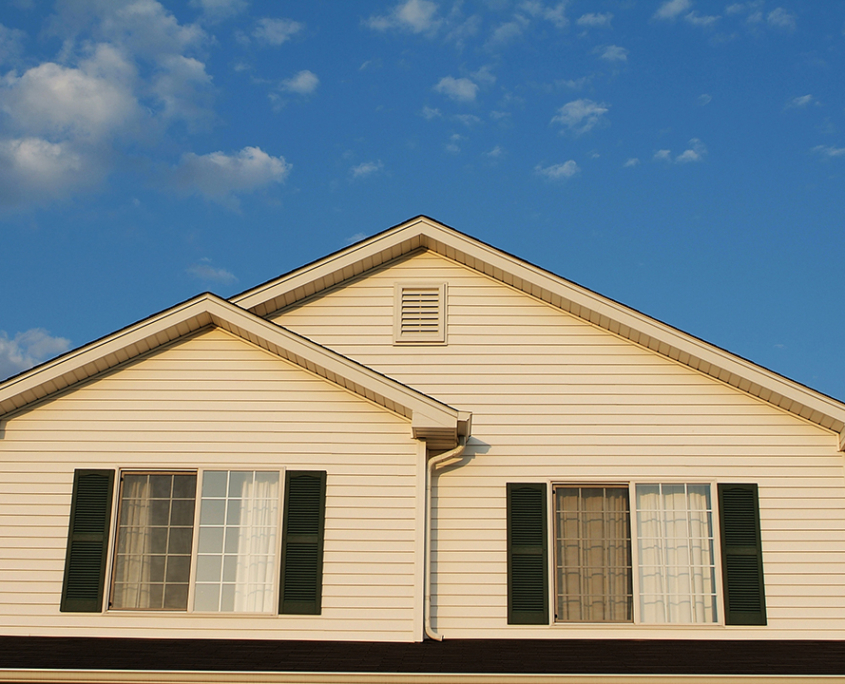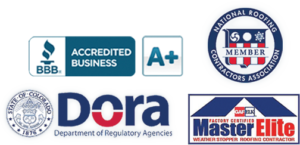When should you replace your roof? Here’s how you can tell
Water Will Get In
Water marks on a ceiling, or even worse dripping water, are definitely a bad sign and may have you worried that your whole roof is in tatters. It absolutely needs your attention however, an isolated leak doesn’t mean your roof will require replacement or extensive repairs. Sometimes stopping it is as simple as filling a crack with caulk, replacing a few shingles, or installing some flashing—a membrane or layer of metal that provides a mechanical barrier to redirect water at corners, crevices, gaps, and other spots vulnerable to leaking.
When should you replace your roof? Fallen tree limbs, hail, and even wind can loosen or remove shingles. Damaged flashing is another common culprit. Even rubberized boots around plumbing pipes, or with improperly installed satellite dishes or solar panels can cause isolated leaks. To determine what kind of leak you’ve got on your hands, first try to trace it to its origin.
Finding Leaks? It may be time
If you are a do-it-yourselfer you can do some basic investigation. However we recommend a licensed and well-reviewed roofing contractor, especially if you’re planning an insurance claim. But if you are going to get up there and check it out, it’s easiest to find a leak when it’s raining outside. Remember that water often accumulates at a spot that’s different from where it’s entering—it generally runs down the length of a rafter or stud and only drips once it reaches a low point.
In an unfinished attic, the framing is visible, so simply start at the leak and look along the length of any wood framing that leads to that point, to see if you find a trail of water that originates higher up on your roof. In a finished attic, you’ll need to use a handheld tool called a jab saw to cut away any drywall that obstructs your view. Once you think you’ve found the origin, look at the top of the roof (you can actually do this safely from the ground with a pair of binoculars) to see if you can identify any obvious culprits, like missing shingles, or worn out flashing near a chimney.
If you can’t locate the leak yourself, as mentioned above, a licensed roofing contractor can perform an inspection and make recommendations about whether repair or replacement is needed. Even if you’re able to locate your own leak, you’ll want to leave the repair job to a pro—climbing onto your roof with a tall extension ladder is a dangerous job. Most leaks can be stopped if they’re limited to a few spots. If, however, you’re experiencing recurring leaks, and your roof is out of warranty, it may be time for a new roof. The money you would spend on multiple short-term fixes is probably better applied to a brand-new roof with a lengthy warranty.
Other Signs Of Wear And Tear
You don’t have to wait for leaks to appear before you consider repairs to your roof, though. When should you replace your roof? Missing, damaged, or curling shingles can all be signs of leaks to come. And the age of your roof itself can be a guide—homeowner’s insurance companies generally assume an asphalt shingle roof will last about 20 years, and some insurers won’t provide coverage if your roof is older than that. If your roof was put on by the previous owner of your home, a roofing contractor or a licensed home inspector can generally provide a rough estimate of the age, based upon the condition of the shingles.
Even without leaks or obvious signs of damage to the roof, it can make sense to replace an out-of-warranty roof that’s more than 20 years old. That’s because once a leak develops, it can do serious damage to the wood sheathing beneath the shingles. And if that sheathing becomes warped or rotted, replacing it can add several thousand dollars to the overall cost of your new roof when you do get around to replacing it. The illustration below shows the different layers involved in a typical roof.
When should your replace your roof? Insurance can dictate
Before you hire anyone to work on your roof, call your homeowner’s insurance company to check your deductible and coverage for roof repairs or replacement. You’ll want to weigh your out-of-pocket costs against the cost of replacing your roof entirely. Consider any resulting increase in your premium as well—it may make more sense to simply cover the cost yourself. Our friends at MountainStorm Insurance explain the process for filing a claim here.
Generally, homeowner’s insurance policies may cover, or contribute toward, the repair of isolated leaks, but won’t cover the cost of replacement. Most insurers will send an adjuster to provide an estimate for the repair, and policies typically cover repairs to the roof, as well as any damage to the framing, drywall, or flooring that results from a leaking roof. If you do receive a payout from your insurance company, you can use that money to make the specific repairs, or apply it toward the cost of a total replacement.
To find out more about roofing replacement, or for a free no cost/no obligation estimate from the M4 Roofing experts, please contact us at info@m4roofing.com or call our headquarters at (303) 797-8600.
M4 Roofing is a licensed and BBB A+ Certified roofing contractor. We have been servicing communities in Colorado, East, Texas, South Dakota and Florida’s west coast for two decades.







